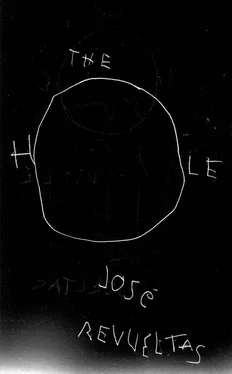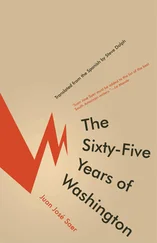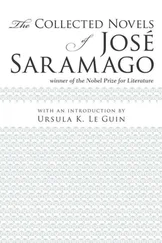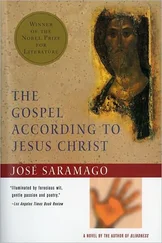The Hole begins with the description of what an eye sees through a confined space: the small hatch of a punishment cell that opens onto the corridors of Lecumberri Prison in Mexico City. The Hole is at once a piece of fiction and a deposition: José Revueltas wrote it between February and March of 1969, while in jail for participating in the 1968 student movement.
Revueltas was not a student in the late 1960s. He was then fifty-four years old and, in fact, had never attended university: in 1932, when he was seventeen and should have been thinking about college, he was already serving his second term in prison, as a result of his militancy in the then illegal Communist Party of Mexico.
By the late sixties Revueltas was a well-known leftist writer and activist with views that suited the Student Movement’s demands for a less vertical government, having maintained his vocal socialist advocacy and strong links to the trade-union movement, while at the same time vigorously denouncing both the Institutional Revolutionary Party’s government (which had ruled the country with absolute authority for more than forty years) and the Mexican totalitarian Stalinist organizations that opposed it. The students considered him a natural ally: the weight of his reputation offered credible ideological shelter for a movement demanding respect for civil liberties and fresh attention to the perennial problem of inequality in Mexico.
The place of The Hole’s creation is important. Lecumberri Prison, where the manuscript is dated, is an outsized symbol in the Mexican imagination. It was inaugurated in 1900 as a triumphant demonstration of the “progressive” rationalist ideology that dominated the government’s discourse at the turn of the twentieth century. Porfirio Díaz, the liberal dictator who ruled the country with an iron fist from 1884 to 1911, built the prison to keep all opposition to his regime locked up and under close scrutiny in more or less humanitarian conditions; designed by the architect Miguel Macedo, it adopted Jeremy Bentham’s model of the panopticon — as set out in his letters from Russia in 1797.
According to Bentham — whose works Revueltas, well versed in political philosophy, had no doubt read — the panopticon is simultaneously a jail and a theater. The greater the visibility of its inmates, the greater the benefit a society obtains from their punishment, which keeps the prisoners out of circulation while transforming them into an example and a spectacle. At the center of Lecumberri Prison was a watchtower from which seven wings radiated outward, every one constantly visible from its hub.
When the long and bloody Revolution against Porfirio Díaz’s regime finally succeeded in installing a stable government (if in the form of a party dictatorship), the prison continued fulfilling its primary purpose as a space of atonement for political opponents — now of the nationalist revolutionary government. By 1929, Lecumberri’s architect, Miguel Macedo, was occupying a cell in his own building, having been deemed a collaborator of the previous, ousted régime: getting locked up in Lecumberri implied being a victim of a political purge, but also, above all, playing a leading role in the spectacle of public punishment.
As the twentieth century advanced, the prison became more crowded — and over-crowded — with petty criminals, even though it also continued to host the opponents of every successive political régime until it was finally closed in 1976. Its looming shadow over Mexico is such that even today people still refer to the building as “the Black Palace” — as if the mere mention of its real name might bring misfortune — despite the fact that it’s not black at all and, since 1980, has been the seat of the National Archives.
Such is the general context of The Hole as it opens with an eye peering at a piece of this panopticon. The author’s intentions are clear right from the start: Revueltas’s fable is a meditation on the way contemporary societies make a performance out of punishment. He portrays prison life as an avant-garde production, where Antonin Artaud’s Theater of Cruelty and Jean Genet’s Theater of Hatred intersect.
What the prisoner’s eye sees in the first pages of The Hole is a glimpse of two floors of cells in the jail’s wing hosting common criminals. The eye belongs to Polonio, the tale’s main character, who is busily calculating how long it takes the guards to make their rounds through the corridors as he waits for a package of drugs to be delivered from the outside.
Revueltas, it should be said, was a special case: he was never in the hole, and unlike many of those detained after the 1968 student uprising, he was never disappeared or tortured, presumably because he was an intellectual celebrity. On top of that, “Revueltas” was a name with public resonance, well known to artistic circles in Mexico and around the world. José’s older brother, Silvestre, an important composer during the first half of the twentieth century, had a close, collaborative friendship with Aaron Copland and Leonard Bernstein; Fermín, the second brother, a prominent muralist, had his work displayed in many government buildings. Rosaura Revueltas, José’s sister, had her Hollywood career as an actress cut short in 1954 when her name appeared on Senator McCarthy’s blacklist during the filming of The Salt of the Earth . Despite the relatively good treatment the novelist received in Lecumberri, he’d been placed in the common criminals’ wing at the start of his sentence, maybe because the prison governor regarded him as an ideologue and preferred to keep him separate from the rest of the political prisoners, mainly the students who revered him.
There’s a photograph of Revueltas, a half smile on his face, right next to a punishment cell, which offers useful information about the story’s setting. A Lecumberri “hole” was a long and narrow passageway, with cement floors and walls, blocked at one end by a metal door with a hatch in its middle, more or less chest-high. The holes looked like containers to transport cattle. A barred window, far up in one wall, was the only source of light. The hatch, just large enough for a soup plate and a cup to be passed through, had a little door that opened outward and could be propped halfway up to serve as a tray for handing in the prisoners’ dishes. Anyone inside the hole wanting to look out needed to stick whatever would fit of his head through the open hatch: this is Polonio’s position when the story begins, and what he is seeing are the “monos.”
In 1960s Mexican prison slang, a guard was a “mono” — a word that, depending on the context, might mean an ape, a nobody, or a character in a comic strip. Polonio sees the monos (“the apes” in Amanda Hopkinson and Sophie Hughes’s brave and polished English translation) making their rounds and Revueltas fully employs the term’s multiple associations to shift the story’s initial image to the world’s origins, in both the scientific and sacred senses. The guards might be apes trapped “on the zoological scale,” but are also the founding couple of a subverted Eden of nobodies: “he-apes and she-apes in Paradise.” As they move, framed by the box of the hatch, they appear to the reader as Expressionist comic illustrations — like Adam and Eve, but primitive and cartoonish.
This opening sequence reveals the author’s approach to the art of telling: a concept is distilled from a scene and then sublimated to produce a literary judgment on the limited condition of the characters: in the beginning there was abjection and the Word was full of scorn. A meditation on the despair of the human condition can be extracted from this scenario. And it is reiterated throughout the whole first half of the story in which nothing occurs beyond awaiting delivery of a package of drugs.
Читать дальше













